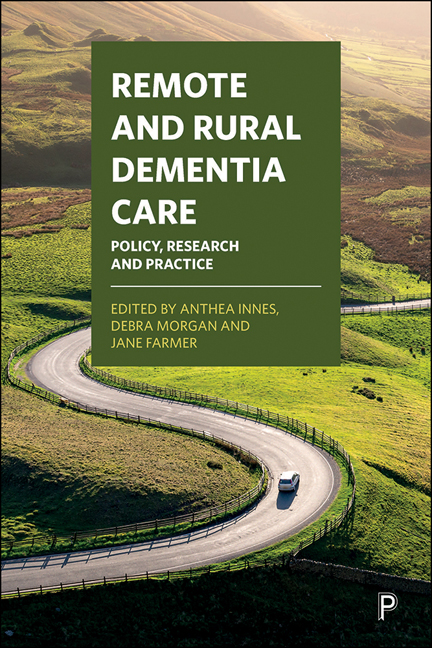4 - Norwegian Remote and Rural Dementia Care
Published online by Cambridge University Press: 10 March 2021
Summary
Introduction
Norway is a sovereign state in north-west Europe with a population of 5.3 million. It is sparsely populated with a landmass of 323,803 km2 stretching nearly 1,800 km from north to south. The majority of inhabitants live in the south-eastern part of the country. Just under two million live in the eight largest cities with more than 70,000 inhabitants each; 2.2 million people live in smaller towns and communities and more than one million Norwegians live in rural areas.
Norway has 422 municipalities; more than half have less than 5,000 inhabitants who live dispersed over a large area. In 2018, 158 of the municipalities had less than 3,000 inhabitants and 29 had less than 1,000 inhabitants.
An increase in the proportion of older people in the population is anticipated over the next 40 years. Statistics Norway has calculated that the proportion of people over the age of 70 will increase from the current 12 per cent to 21 per cent by 2060 (Leknes et al, 2018). The population over the age of 80 will triple in the same period. This pattern is even more dramatic in Norway's rural areas due to migration to urban areas, within the country. Younger people are moving to more central urban areas and older people remain in the rural municipalities. It is expected that in some remote municipalities more than one in three inhabitants will be over the age of 70 by 2040 (Leknes et al, 2018).
Figures from 2018 indicate that there are approximately 80,000 people with dementia in Norway; 1.5 per cent of the total population. By applying the prevalence rates calculated by Prince and colleagues (2013) to the Norwegian population, the number of people with dementia in Norway is projected to be 130,000 by 2050. The largest growth will be over the next decade, with an increase of about 30,000 to more than 110,000 by 2030. Accurate Norwegian population studies about dementia prevalence are lacking. The Norwegian Dementia Plan 2020 will provide more nuanced and detailed information regarding the prevalence of dementia in Norway. This is based on an ongoing study of a representative selection of 10,000 people over the age of 60.
Norway has a publicly funded health and social care system. Hospitals and specialist health services are run by national government-owned health trusts, while the municipalities have the responsibility to provide primary healthcare for the inhabitants.
- Type
- Chapter
- Information
- Remote and Rural Dementia CarePolicy, Research and Practice, pp. 57 - 72Publisher: Bristol University PressPrint publication year: 2020

